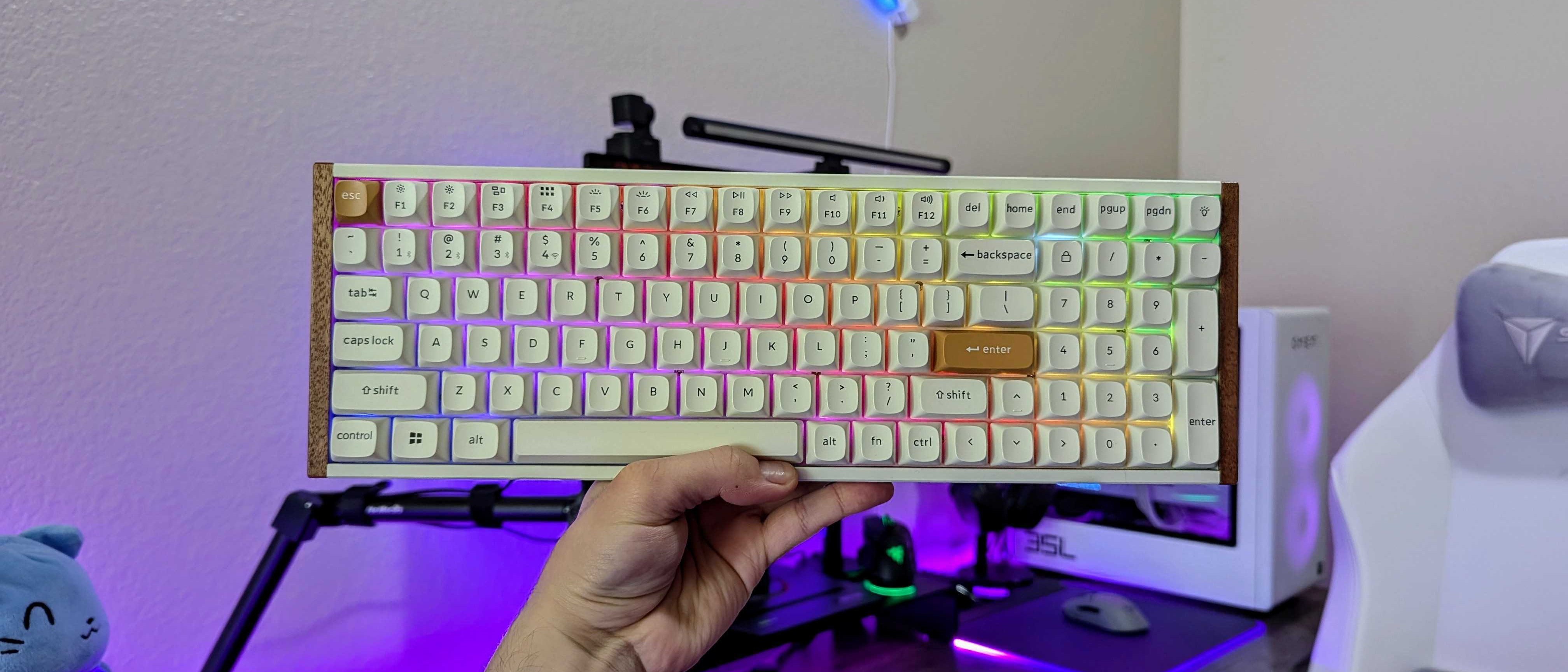How to reduce eye strain using Night light on Windows 11
You can improve sleep quality and reduce eye strain with Night light on Windows 11, and here's how.
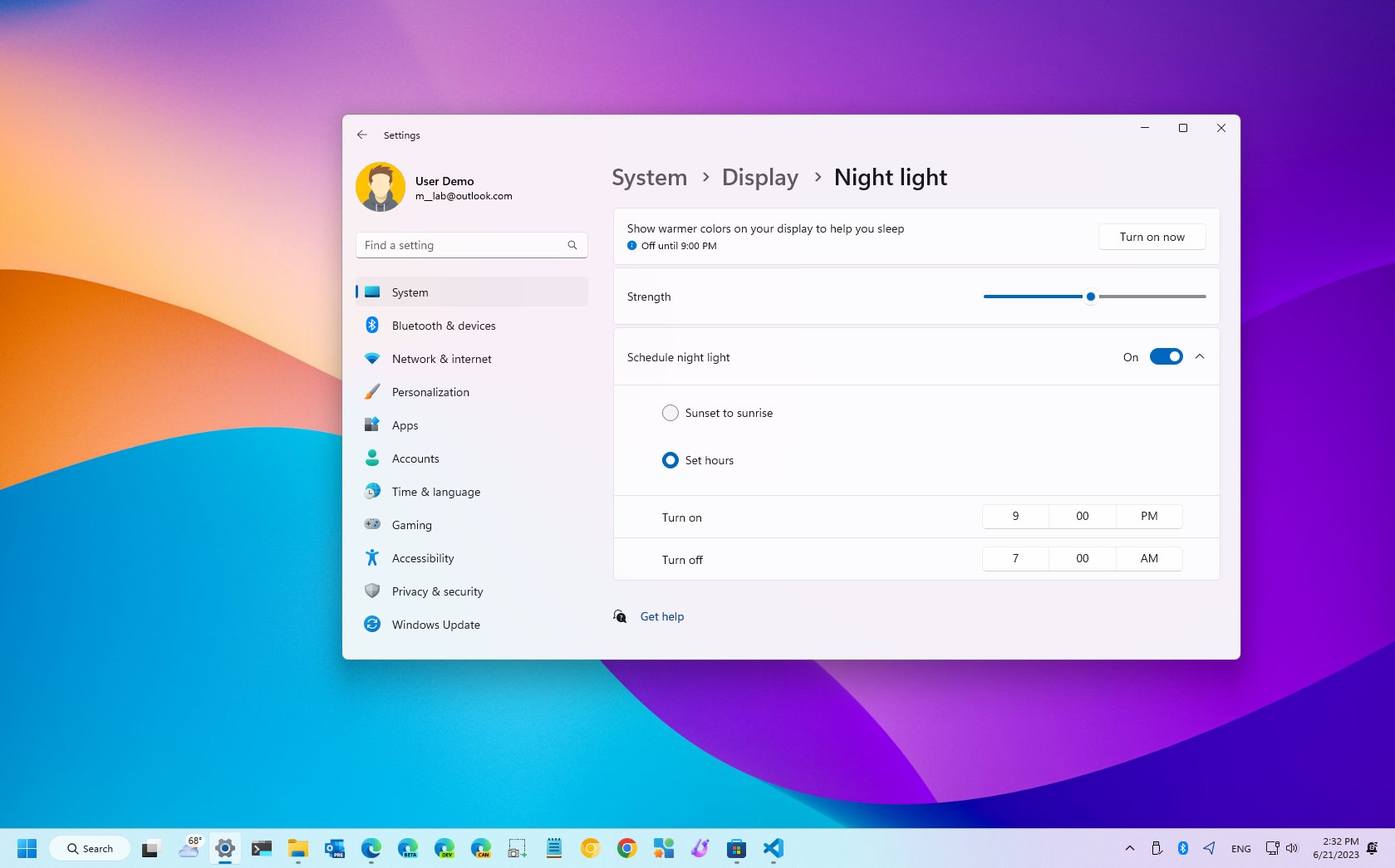
On Windows 11, "Night light" is a feature designed to reduce eye strain and helps you to fall asleep after long hours working on your computer at night.
Screens can produce a quiet amount of blue light (similar to the natural light your eyes receive every day), which might be fine when the sun is out. However, it can interfere with your internal clock at night and negatively affect melatonin creation, which can reduce sleep quality and cause discomfort in your eyes.
When you enable Night light, the feature reduces the amount of blue light and shows warmer colors that help reduce eye strain and fall asleep. Your mobile device has had this feature for a long time.
This how-to guide will walk you through the steps to enable and configure Night light to minimize the chances of getting your eyes fatigued due to long hours in front of the computer.
How to enable Night light on Windows 11
To enable the Night light feature on Windows 11, use these steps:
- Open Settings.
- Click on System.
- Click the Display page on the right side.
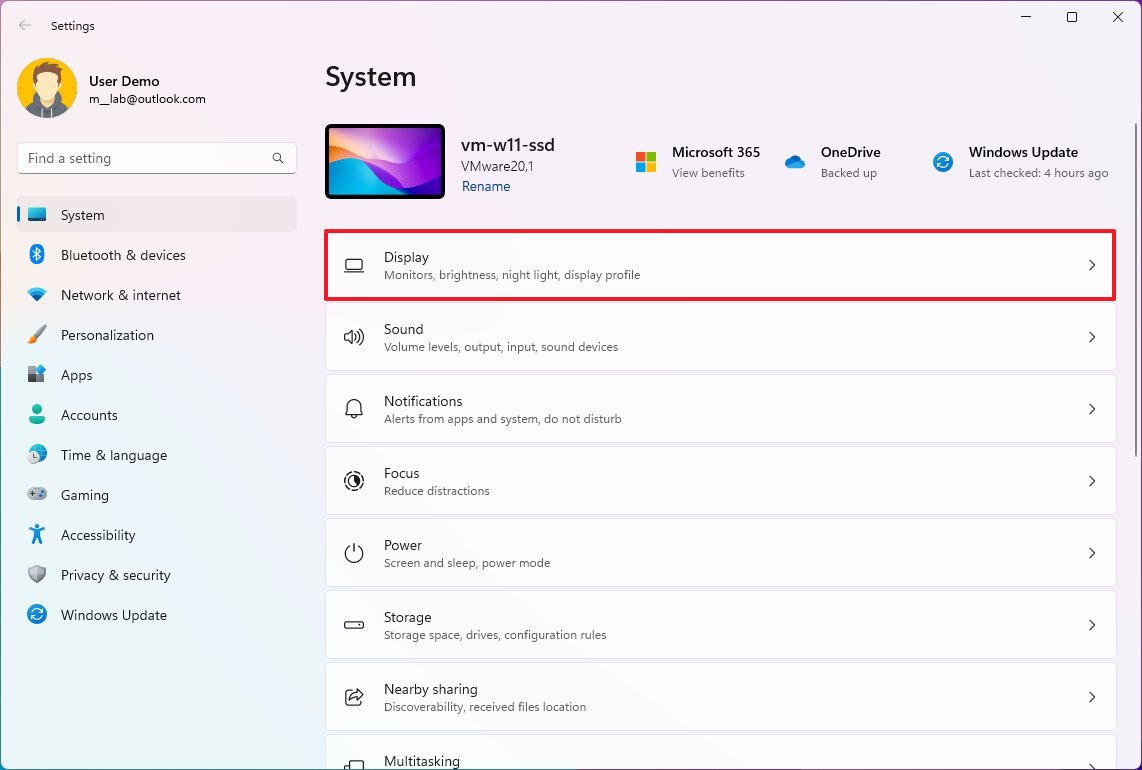
- Under the "Brightness & color" section, turn on the Night light toggle switch to enable the feature.
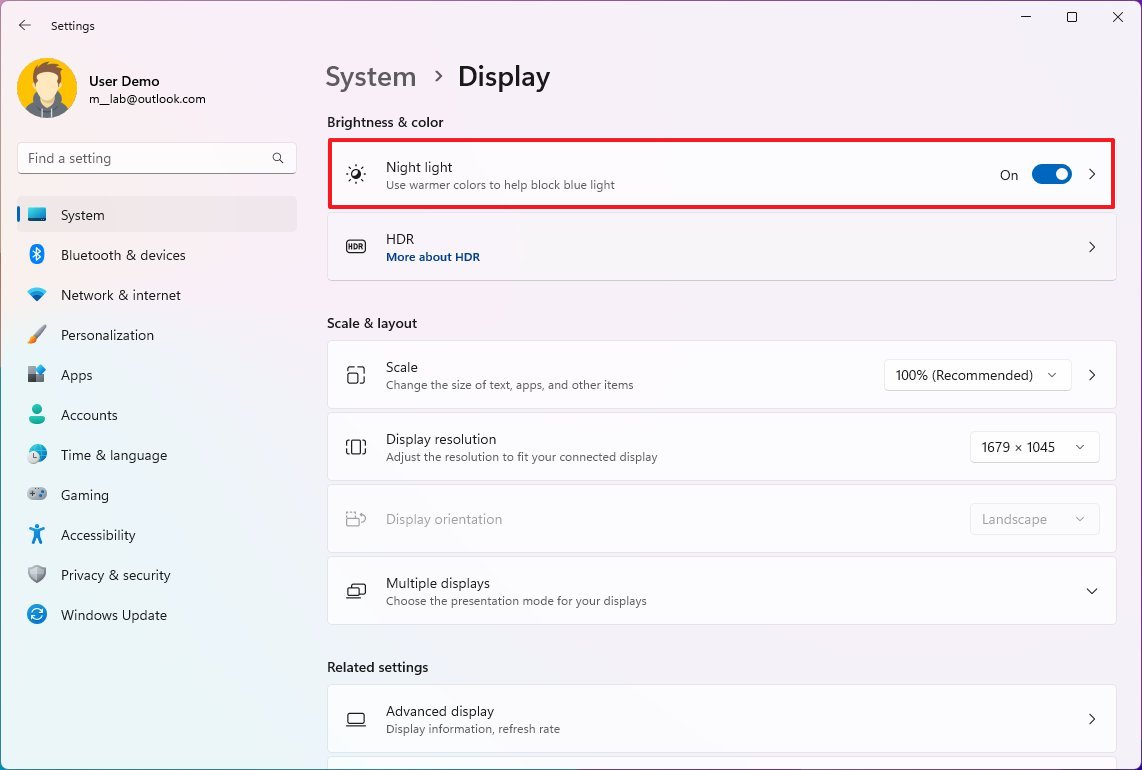
- (Optional) Turn off the Night light toggle switch to disable the feature.
Once you complete the steps, the feature will show warm colors on the screen to help minimize eye strain while working at night.
Quick Settings
Get the Windows Central Newsletter
All the latest news, reviews, and guides for Windows and Xbox diehards.
Alternatively, you can also enable the feature from the "Quick Settings" flyout by clicking the network and volume icon or using the "Windows key + A" keyboard shortcut and clicking the Night light button.
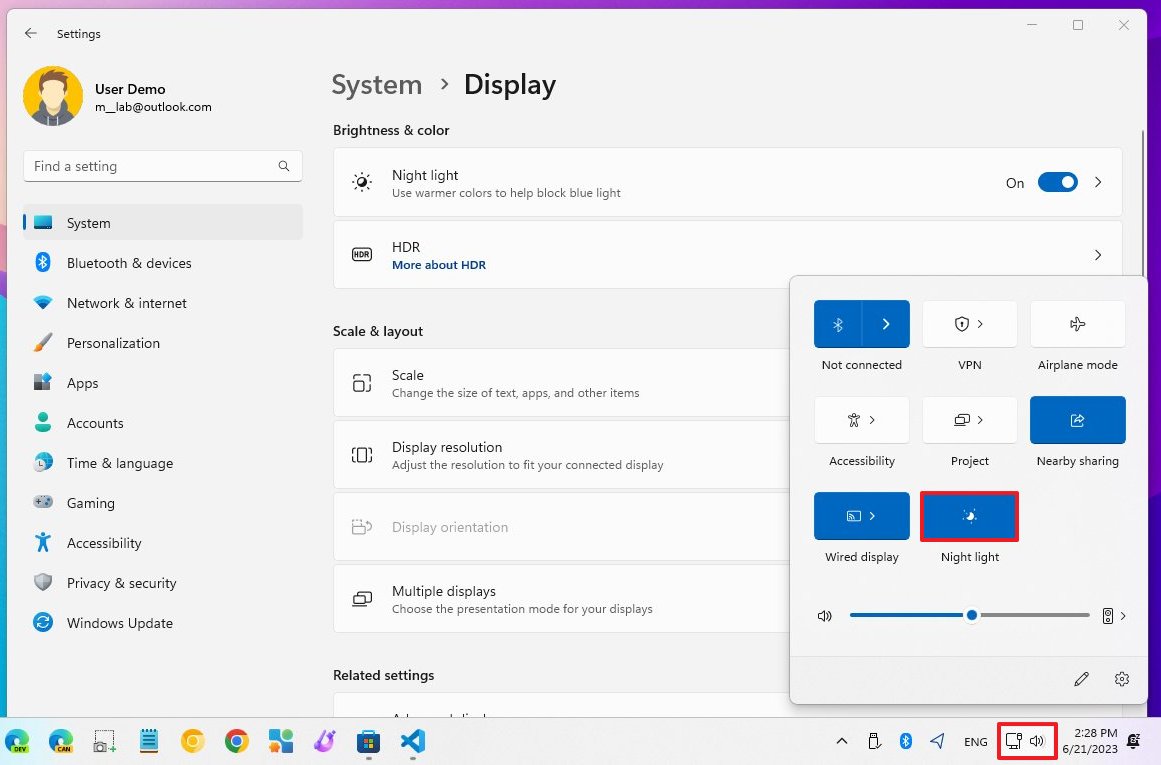
If you don't see the button, click the "Edit quick settings" button, click the "Add" button, select the "Night light" option, and click the "Done" button.
How to change Night light settings on Windows 11
Night light is a straightforward feature, but you can also customize a few settings, including the default color temperature and schedule.
Change color temperature
To change the Night light color temperature settings, use these steps:
- Open Settings.
- Click on System.
- Click the Display page on the right side.

- Under the "Brightness & color" section, select the Night light setting.

- Use the "Strength" slider to specify the correct color temperature of the display when the feature is turned on.
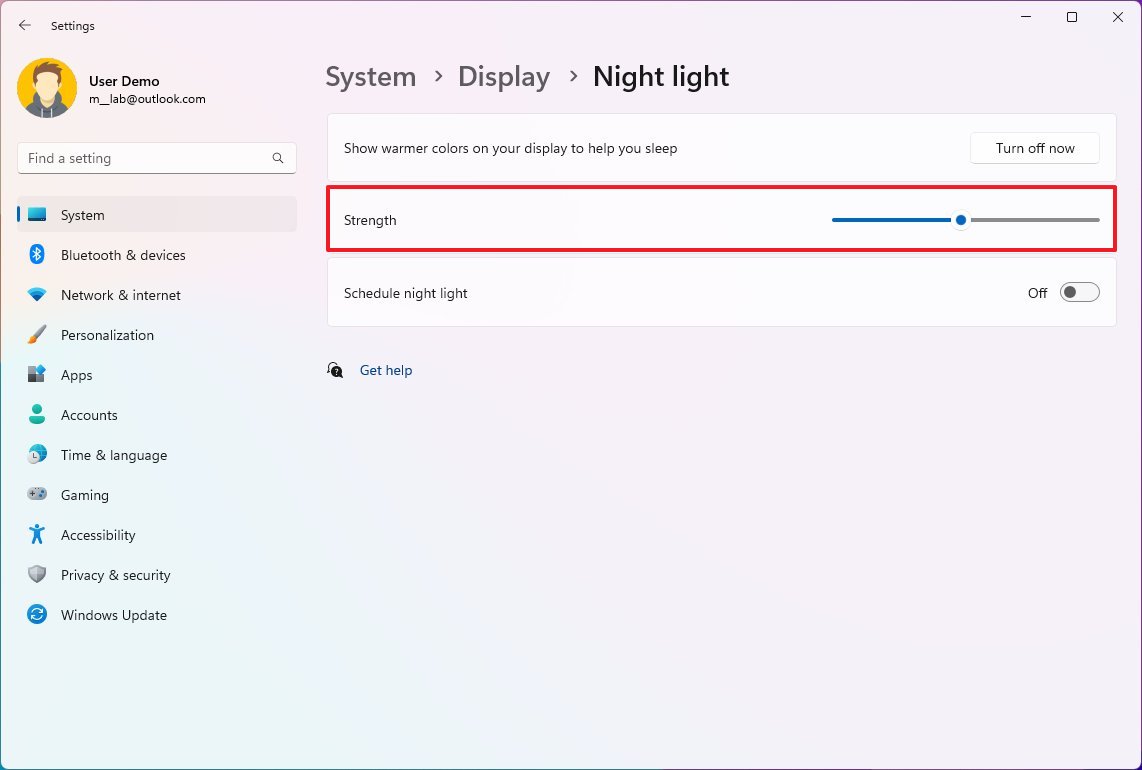
- (Optional) Click the "Turn on now" button to enable the feature immediately.
After you complete the steps, the display will show the color temperature you specified when enabling Night light. The correct warm temperature is up to you to decide. However, the only rule of thumb is to avoid extremely high temperatures. Only set it to the color you feel most comfortable with.
Custom schedule
Windows 11 comes with Night light disabled by default, and you have to turn it on manually. However, you can always schedule when the feature should turn on and off automatically.
To configure the Night light schedule, use these steps:
- Open Settings.
- Click on System.
- Click the Display page on the right side.

- Under the "Brightness & color" section, select the Night light setting.

- Turn on the "Schedule night light" toggle switch.
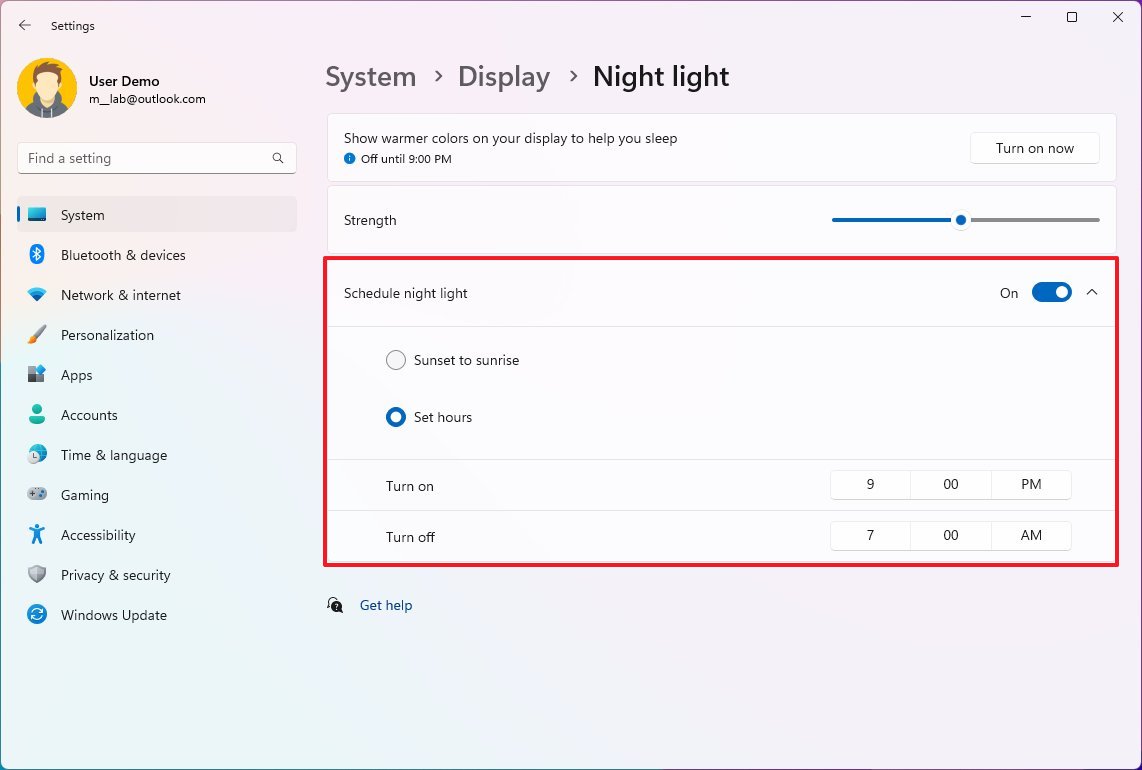
- Select the "Sunset to sunrise" option to allow Windows 11 to configure Night light automatically based on the sunset and sunrise hours in your location.
- (Optional) Choose the Set hours option.
- Specify the hours when the feature should turn on and off.
Once you complete the steps, Windows 11 will turn on and off Night light during the specified schedule on the settings page.
More resources
For more helpful articles, coverage, and answers to common questions about Windows 10 and Windows 11, visit the following resources:
Mauro Huculak has been a Windows How-To Expert contributor for WindowsCentral.com for nearly a decade and has over 15 years of experience writing comprehensive guides. He also has an IT background and has achieved different professional certifications from Microsoft, Cisco, VMware, and CompTIA. He has been recognized as a Microsoft MVP for many years.

